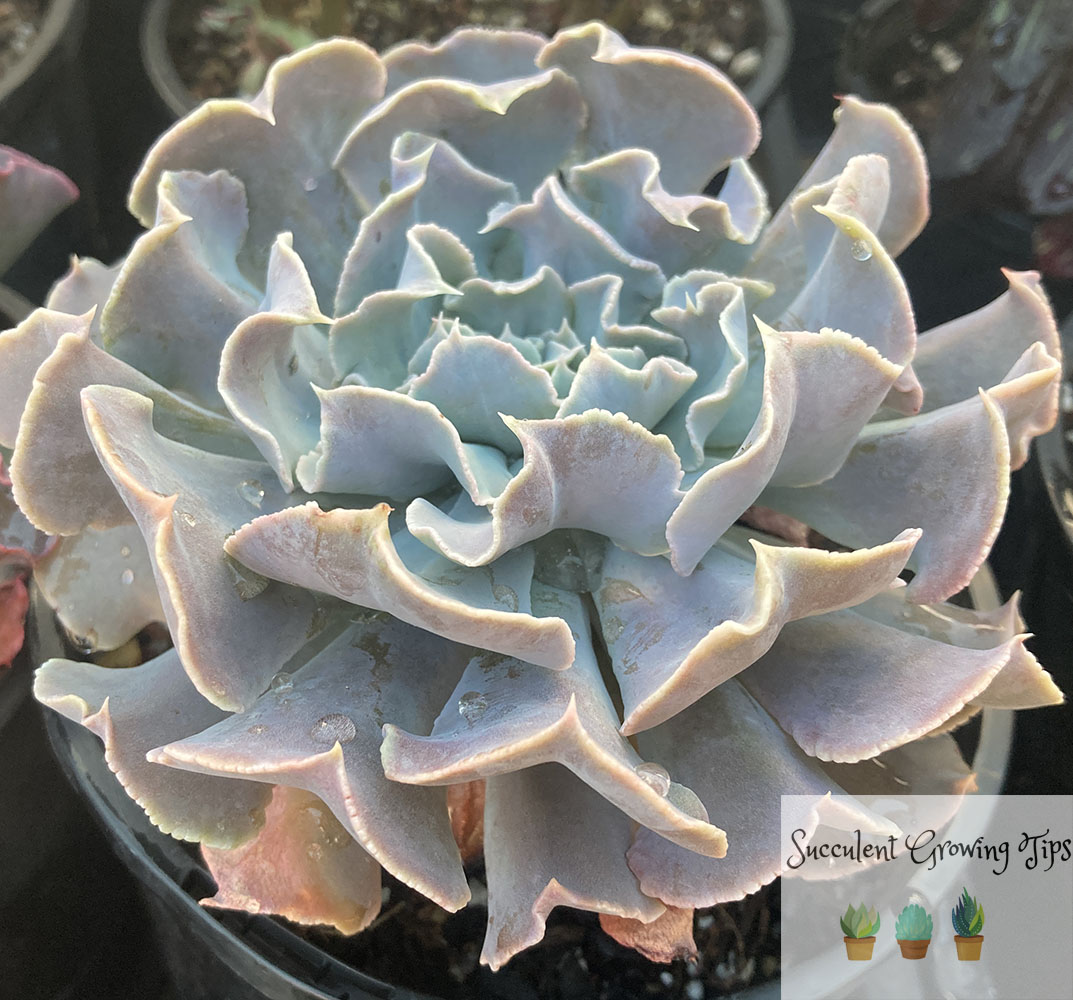New succulent hybrids seem to come thick and fast. While some are better than others Echeveria Swan Lake is truly exceptionally pretty as well as quite hardy. Below we will have a look at everything there is to know about Echeveria Swan Lake.
Description
Echeveria Swan Lake aka Topsy Pinky aka Doppler is a fantastic hybrid of Echeveria Shaviana and Echeveria Runyonni. Swan Lake has inherited the gorgeous pink-purple colour and a slightly frilly edge from the Shaviana and the oddly shaped leaves from Echeveria Runyonii ‘Topsy Turvy’.
The result of the hybridization is staggeringly beautiful and also quite hardy. Echeveria Swan Lake seems to have got the best of both worlds. Although the colour can change with the seasons, the plant seems to retain some pink even in the warmer months.
The frilly edge is very subtle and looks fabulous on the already intriguing upside down leaves. The centre of the leaf rises from the middle but also curves upwards.
Echeveria Swan Lake grows to approximately 15cm in diameter, though can measure larger in ideal conditions. The rosettes stay quite low to the ground and only rise to about 10cms height.
In summer the rosette will open up and the colour will most likely change to greyish- blue with a hint of purple. In winter all sort of colours come through from pink, to purple to orange. The intensity of the colour will largely depend on how much sun exposure the plant gets, how big the pot is etc.
Flowers appear in winter-spring and rise up on a tall stalk. They are orange-pink in colour.
Position & Care
Echeveria Swan Lake is quite a hardy plant and should be able to deal with direct sun exposure to about 35C/95F although, as with most succulents, it is recommended provide shelter from strong sun during heatwaves as the leaves can burn. Morning sun/afternoon shade is the ideal position during a hot summer and full sun during the rest of the year to get those fabulous colours.
Echeveria Swan Lake is also not frost hardy and will need to be brought indoors once frosts are expected. It will, however, happily grow outdoors in low temperatures to about 1C/33F.
To get the best results, upgrade the pot once a year and plant in fresh succulent potting mix. If you live in a climate that often experiences hot summers avoid black pots as these will increase the heat around the root area.
Good quality succulent potting mix will ensure the plant is healthy and beautiful. Although Echeveria Swan Lake is likely to grow in a generic potting mix it will not look as nice.
In the garden Echeveria Swan Lake can be planted in a sunny spot and will be much more hardy than plants grown in pots. This means it will take higher temperatures and will not need watering as often.
Watering can be left to the rain, though do make sure to water well during heatwaves and droughts. A good rule is to water once the potting mix has dried up.
Echeveria Swan lake is not suitable to be grown indoors unless it is in a sunroom, or under professional plant growing lights.
Propagation
Echeveria Swan Lake can be propagated by offsets, leaves or seeds. The easiest and fastest method of propagation is by taking cuttings of offsets/chicks. To successfully propagate offsets it is best to wait until they are big enough and have a substantial stalk that can be cut through. The cutting should then be left to dry for 24hrs and after that planted in succulent potting mix.
All propagating should be done during the growing season which is Spring and Summer. In moderate climates Autumn is good as well. My favourite time to propagate is Spring as it is not yet hot enough that the cuttings will burn. In summer during hot days cuttings can be quite vulnerable.
Leaf propagation is also possible, though it can be a bit difficult to take the leaves off entirely. For a how to guide on how to propagate succulents from leaf see this article.
Seed propagation can be quite unreliable and extremely slow and thus I would not recommend going down this path.
Pests
Echeveria Swan Lake is susceptible to all the usual succulent pests such as mealy bugs, aphids and snails/slugs.
For a full list of pests and how to deal with them see our article on animals that like to eat succulents.
Toxicity
Echeveria Swan Lake, just like all the other Echeveria is not listed as toxic to humans, dogs, cats or other pets/ live stock. It is however not recommended to purposefully eat this plant.
Where Can I Get It?
Echeveria Swan Lake is a fairly recent cultivar and so it’s unlikely you will be able to find it in the local garden centre. Specialist succulent nurseries may stock this plant. Online nurseries are more likely to have one.
If you like Echeveria Swan Lake, you may also be interested in Echeveria Cubic Frost or Echeveria Topsy Turvy.
